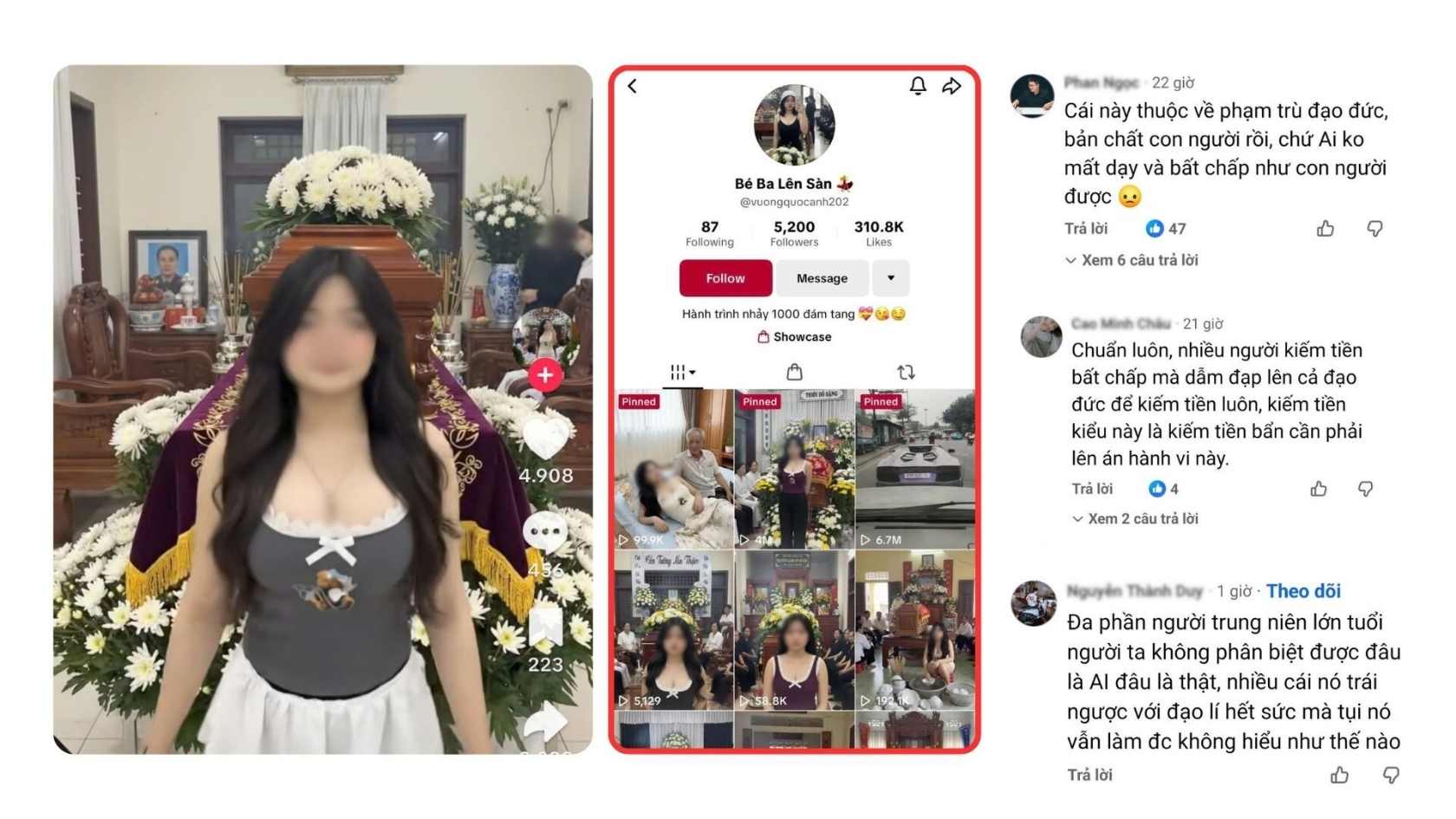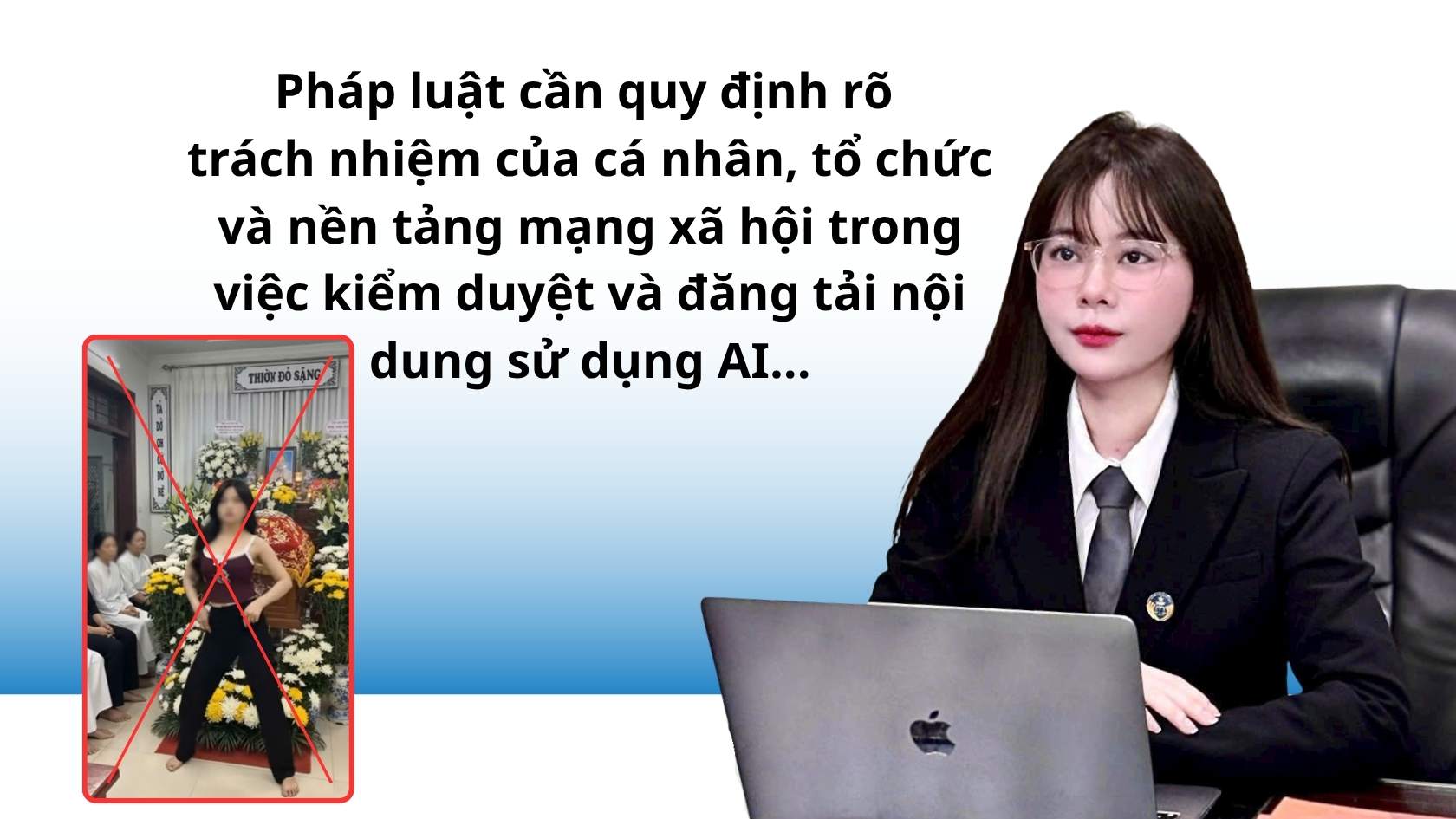
After the incident of using AI to turn ordinary people into disabled people to create TikTok sales clips reported by Lao Dong Newspaper on October 30, 2025, social networks continued to stir up with a series of clips "jumping in front of the coffin" of the account "Be Ba Len Tan", showing that the moral boundary is being erased by the trend of interactive sentences.
In recent days, the TikTok account "Be Ba Len San" has caused outrage when it continuously posted videos of a girl dressed in an open dress, dancing offensively in front of a funeral and coffin of a recently deceased person. More notably, in the biography, this account also wrote a description of The Journey of Dancing with 1,000 Funerals, causing outrage in the online community.
The clips quickly attracted millions of views and thousands of controversial comments. Many people think that this is an act of "playing a game over the pain of others", insulting funeral rituals and going against traditional customs. Below each video, the account has a shopping basket to sell the product, showing that the main purpose is to profit from the attention of the crowd.
On social media, account Hoang Nam 97 wrote: "It is impossible to understand what people think when turning a funeral into a view-catching tool. Whether it is real people or AI-generated, it is still inhumane". Another user using Thu Ha 173 account indignantly shared: "Social networks are now like a chaotic stage, whoever shocks more will win".
Many opinions say that after the incident of using AI to distort the image of others to take advantage of emotions like the case of the account "ngoclan9308", the spread of offensive videos like this shows a more dangerous trend. These behaviors show that content creators are willing to overcome ethical limits, even using AI to create or edit fake situations to attract views.

Discussing this issue with Lao Dong, Lawyer Tran Thi Thanh Lam - Chinh Phap Law Office stated that from a policy perspective, Vietnam currently does not have separate regulations to directly regulate forgery using AI technology. However, this behavior can be handled if there are sufficient factors to constitute crimes such as "Fraudulent appropriation of property" (Article 174), "Humiliating others" (Article 155) or "Illegal provision and use of computer network and telecommunications network information" (Article 288 of the 2015 Penal Code).
According to Ms. Lam, in the context of rapid development of AI technology, building a separate legal corridor for this field is very necessary. The law needs to clearly stipulate the responsibilities of individuals, organizations and social networking platforms in censoring and posting content using AI. At the same time, there are strong enough sanctions to deter and strictly handle forged and distorted acts that cause serious consequences.
For the people, raising awareness and digital skills is still the most important solution. Each individual needs to form the habit of verifying information before sharing, purchasing, donating or supporting, especially with content that is strong in emotions. Young people should proactively instruct their parents and grandparents on how to distinguish between real and fake videos and identify reliable accounts. A small reminder can help relatives avoid being scammed or mentally hurt, she said.











